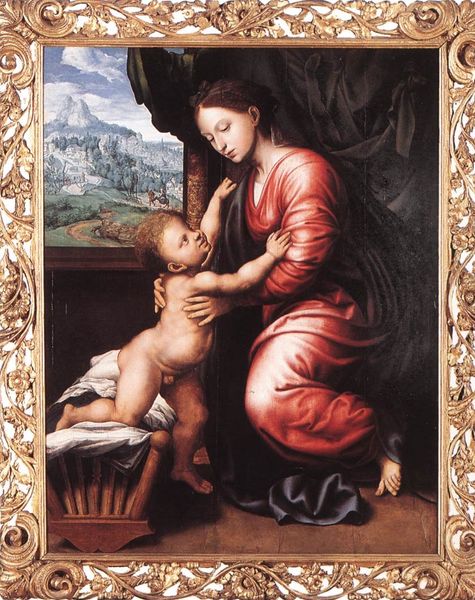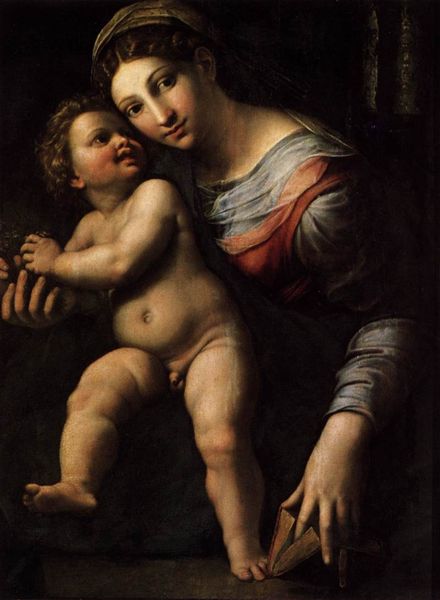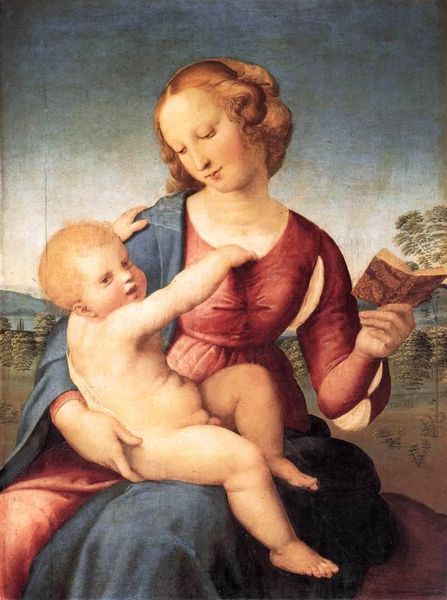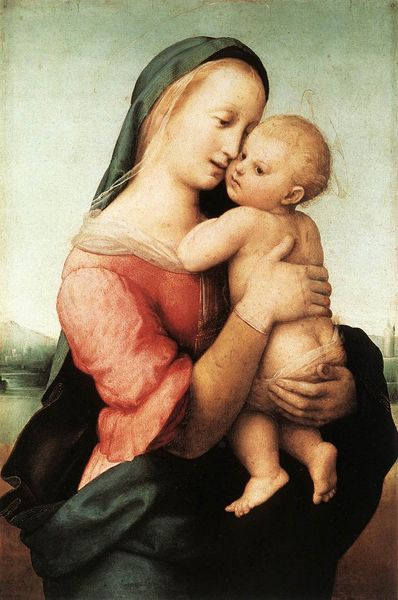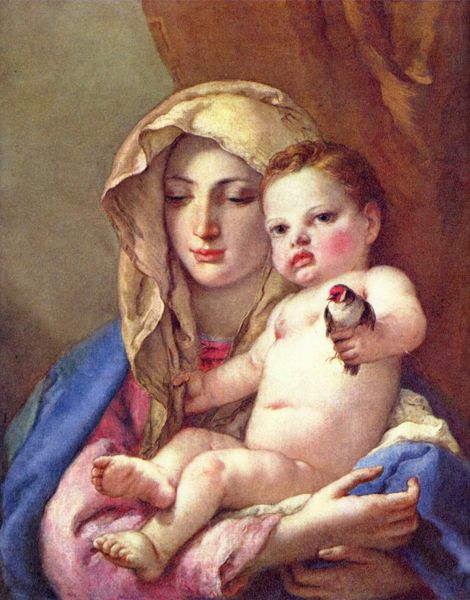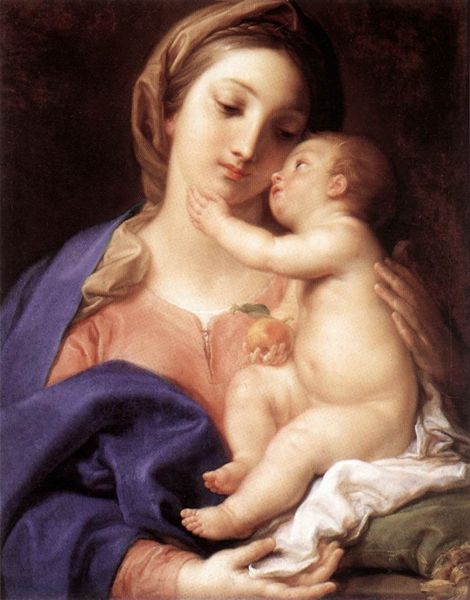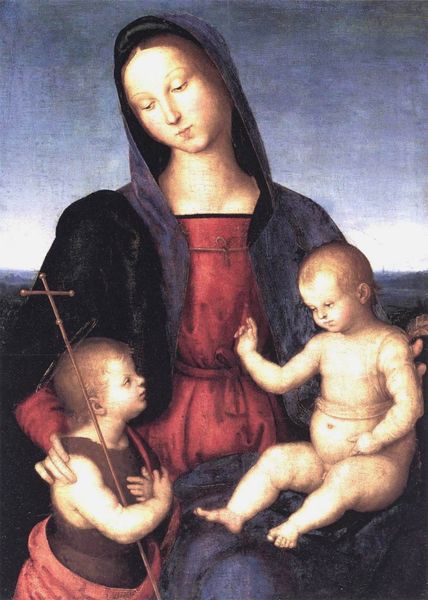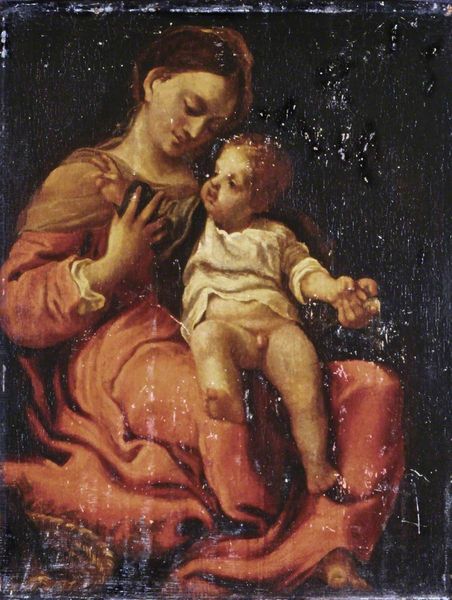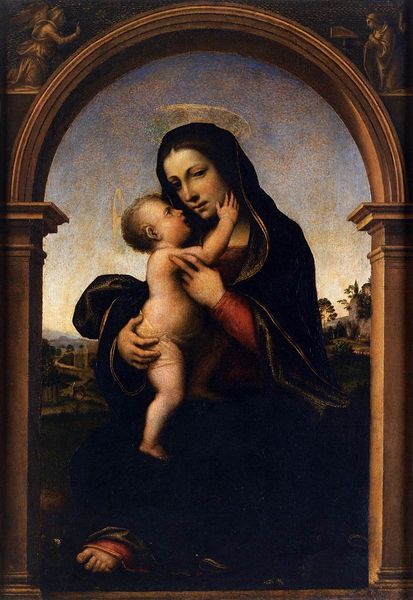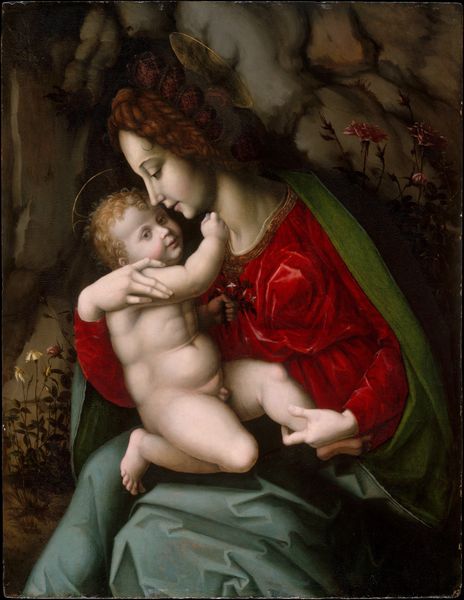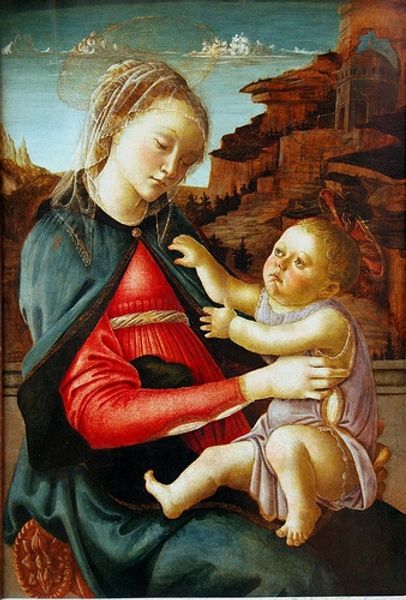
oil-paint
#
portrait
#
oil-paint
#
figuration
#
oil painting
#
history-painting
#
northern-renaissance
Copyright: Public domain
Editor: Here we have Jan van Hemessen's "Virgin and Child" from 1543, created with oil paint and residing here at the Prado. The texture of the fabric seems almost palpable, you know? It also makes me think a lot about motherhood... What stands out to you in this piece? Curator: I'm drawn to how the artist's use of oil paint to represent various textures - the roughness of the tree bark compared to the smoothness of the figures' skin, or the draping in her garment – speaks to the skill and availability of materials within that specific Northern Renaissance economy. Think about the trade routes necessary for pigments and oil. Editor: That’s really interesting! I hadn't considered the economic aspect of the materials themselves. How might this access influence the image’s message? Curator: Precisely. Consider the crimson dye in her robes, likely derived from expensive materials such as kermes insects, which held cultural, economic, and political significance in that time period, indicating wealth and status, also notice its heavy weight on the lap. Van Hemessen has the resources, skills, and labor, perhaps with workshop assistance, to convey that to the patron and their community. How might this connection influence our interpretation of the image itself? Editor: Wow, I never thought about the material production. I was thinking more along the lines of "motherhood", but this production approach creates a deeper reading into that subject and beyond. Thanks for pointing this out! Curator: Of course. Shifting our perspective to material analysis opens new avenues for appreciating these pieces. The divine may meet economics, or not, it's the viewers choice, in my mind!
Comments
No comments
Be the first to comment and join the conversation on the ultimate creative platform.
